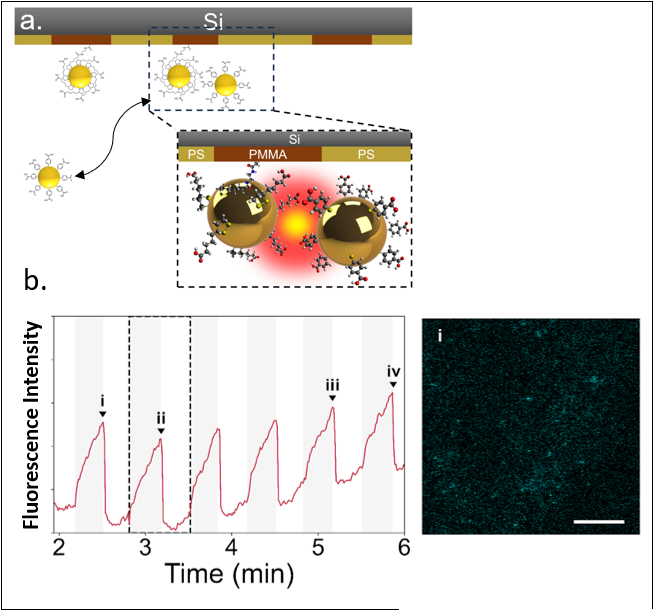2024 IRG-2: Electrically Tuned Dissipative Assembly of Nanoparticles in Colloidal Solution
Electrohydrodynamic (EHD) flow, an electrokinetic phenomenon resulting from an applied oscillatory potential in solution, drives lateral assembly of plasmonic nanoparticles (NP) in response to an electric field gradient on an electrode-liquid interface.
•Results provide insight on how frequency of oscillatory electrical stimuli and local perturbations on electrodes affects can drive EHD flow.
•Metal enhanced fluorescence monitors dissipative assembly where fluorescence intensity increases and decreases are observed when the oscillatory electric field is cycled on and off, respectively. The results show EHD driving forces on NP can affect cluster assembly and disassembly and produce surfaces with dynamic and reconfigurable optical response.
•In situ vibrational spectroscopy of chemical reactions between ligands on NP surfaces have also been measured. Thus, this research provides a platform for monitoring dissipative assembly in response to chemical, electrical and optical stimuli.

A diagram showing a reaction cycle for a chemically driven active material. Hydrogen peroxide is used as a fuel to convert an inactive building block (red) to an active building block (blue) which assembles into a stacked nanorod phase. Simultaneously dithiothreitol (DTT) converts the active building blocks and the fibers back to the inactive building blocks. CryoEM images showing the stacked nanorods, annotated to show the degree of stacking.
H. Wei, H. Pascual-Herrero S. Selmani, S. Marroquin, Z. Guan, R. Ragan
(University of California, Irvine)